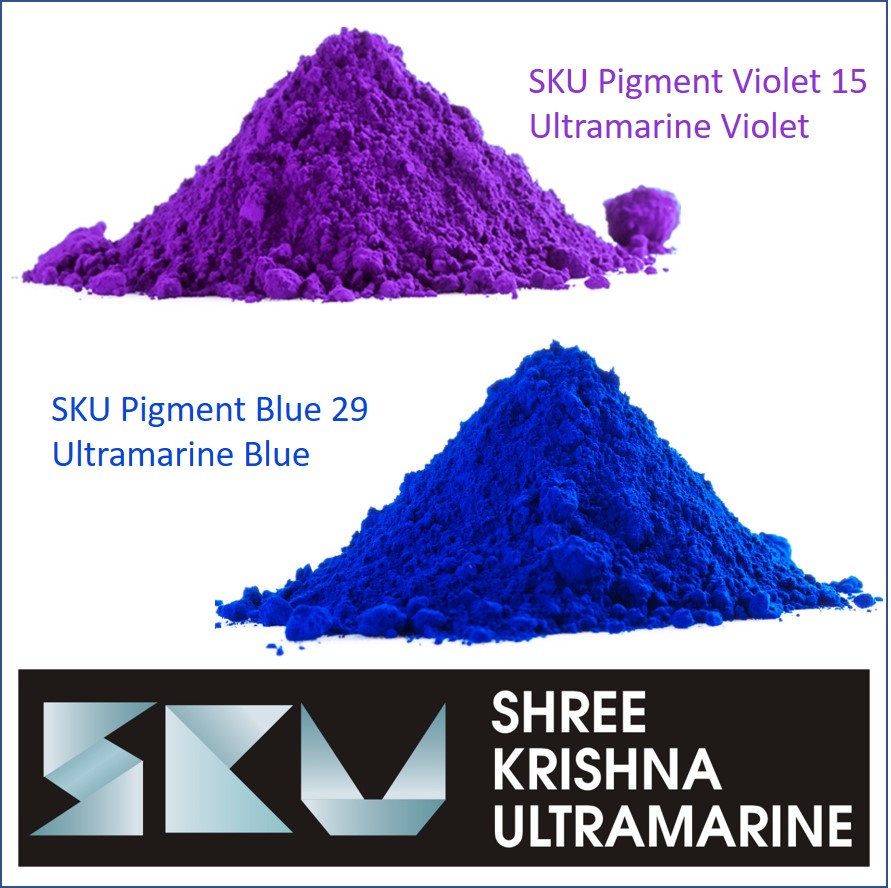Detailed Notes on Ultramarine that discussed on Social Media
Why Ultramarine Pigments Remain the World’s Most Trusted Blue

For centuries, color has shaped art, design, and industry. Among the most celebrated hues, Ultramarine stands out for its depth and richness. Today, companies like SKU Pigments specialize in manufacturing high-quality Ultramarine pigments, including Ultramarine Blue, Ultramarine Violet, Pigment Blue 29, and Pigment Violet. From paints and plastics, Ultramarine has become the standard of modern blue pigments.
Tracing Ultramarine from Lapis Lazuli to Industry
The name Ultramarine comes from the Latin “ultra mare,” meaning “beyond the sea,” a reference to lapis lazuli originally imported from Afghanistan. For centuries, it was the most expensive pigment, used by Renaissance masters to paint sacred art. It symbolized wealth and divinity.
Modern chemistry made it possible to synthesize Ultramarine pigments, bringing the once-exclusive shade into mass production. This breakthrough turned a luxury color into a widely available solution for countless sectors.
Ultramarine Blue Pigments
Ultramarine Blue pigments—the synthetic form of Pigment Blue 29—are globally trusted. Known for their stability, they are safe, eco-friendly, and non-toxic. They are used in:
• Architectural and industrial paints for durability and brilliance.
• Polymers and rubbers, thanks to UV resistance.
• Fine printing, where precision is vital.
• Personal care, given their non-toxic nature.
This balance of durability and eco-friendliness keeps Ultramarine Blue among the most demanded pigments.
Ultramarine Violet and Pigment Violet
Ultramarine Violet offers subtle elegance that appeal in specialty coatings. Pigment Violet derived from Ultramarine is eco-safe, making it ideal for sensitive products.
Its gentle color enhances interior design, while ensuring durability without chemical breakdown.
Industrial Uses of Ultramarine Blue
Pigment Blue—particularly Ultramarine Blue pigments—remains a market leader. It offers tinting strength for:
• Car finishes with resistance to fading.
• Packaging, ensuring stable shades.
• Decorative plasters, adding beauty and durability.
This wide applicability ensures Pigment Blue’s staying power.
The Benefits of Blue and Violet Pigments
• Non-Toxic & Safe: Ideal for cosmetics and toys.
• Heat & Light Resistant: Stable in outdoor use.
• Eco-Friendly: Green production methods.
• Cost-Effective: Budget-friendly industrial choice.
• Versatile: From fashion to infrastructure.
Where Ultramarine Pigments Shine
1. Paints & Coatings: Durable architectural shades.
2. Plastics & Rubber: Safe for packaging.
3. Cosmetics: Skincare-safe pigments.
4. Construction: Plaster and decorative finishes.
5. Printing & Inks: Vivid packaging inks.
Why Choose SKU Pigments?
SKU Pigments is a trusted manufacturer, offering reliability in Ultramarine pigments. Their product portfolio includes:
• Pigment Blue 29 for vibrant, bold applications.
• Ultramarine Violet and Pigment Violet for elegance and subtlety.
• Custom shades for niche industries.
Their reputation is Pigment Violet built on global reach and green practices.
Final Thoughts on Ultramarine Pigments
From a rare treasure to a global industrial pigment, Ultramarine has stood the test of time. Whether it’s the timeless vibrancy of Ultramarine Blue, the sophistication of Ultramarine Violet, or the stability of Pigment Blue 29, Ultramarine pigments remain essential.
With SKU Pigments as a trusted partner, industries achieve innovation with color. As demand for non-toxic pigments rises, Ultramarine will remain dominant in global markets.
FAQs
1. What is Ultramarine?
A vibrant pigment from lapis lazuli, now produced synthetically.
2. What is Pigment Blue 29?
The synthetic form of Ultramarine Blue.
3. Where is Ultramarine Violet used?
In eco-friendly and children’s products.
4. Are Ultramarine pigments safe?
Trusted globally for safety.
5. Why choose SKU Pigments?
Trusted supplier worldwide.